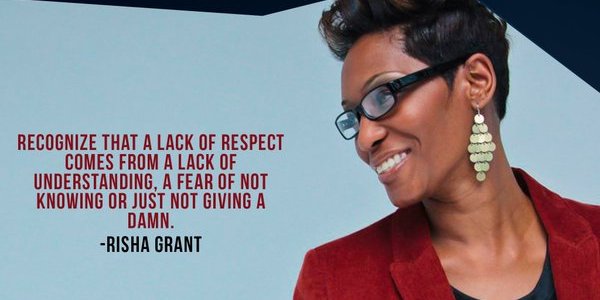Diversity expert Risha Grant explains how to be more inclusive in your life and business.

If I asked you if your workplace was diverse and inclusive how would you answer? Would you frown and mutter something about the difficulty of hiring a more diverse workforce? Or would you proudly point to hiring statistics that show gender and ethnic diversity at your business? Either answer might mean you need to do more to make your environment inclusive.
Diversity and inclusivity is a difficult subject to talk about. In the past, news focused on negative aspects like poor hiring practices.
Now the news is focusing on positive research showing that diversity not only increases the performance of the workforce but also brings many benefits such as increased innovation and creativity. So it’s no surprise that in 2017, the CEOs and senior executives of over 175 companies pledged themselves to diversity goals.
However, while more people are talking positively about diversity and inclusivity, fewer people are discussing how we should discuss diversity and inclusivity in the workplace.
Enter Risha Grant, diversity consultant.
Grant is an expert in bias. She encountered (and also expressed) bias growing up as a black, bisexual woman in the conservative state of Oklahoma. Her experience inspired her to found Risha Grant, LLC, the only award-winning, full-service diversity communications firm in Oklahoma.
Recently she wrote a book that gives some real advice on how to discuss diversity and inclusivity so we can confront our own biases. Her book, That’s BS, is an honest and no-holds-barred look at the biases we all possess.
No one is free from bias
Grant uses anecdotes from her personal life as a black girl in mostly white Oklahoma and as a bisexual woman uncomfortable with transgender people to show that even as a diversity consultant she is not free from bias. It is also her way of opening up dialogue so that her readers can feel comfortable to confront their own biases.
In the book That’s BS, Grant explains that to increase diversity and inclusivity in the workplace we need to be able to talk about it. And to start talking about it, we need to follow a 3-step process to identify, own, and confront our own BS.
BS is her provocative acronym for the term “bias synapse.” Her concept refers to our brain synapses which channel our actions, including our biases.
How to get out of your comfort zone and be more inclusive
In a recent talk at our company, Grant explained we all tend to default to our comfort zone when it comes to people. We all spend time and seek out the company of others who think, look, or act just like us. For Grant, that was the black community she grew up with in Oklahoma. She feels most comfortable with this group and has to make an effort to break out of her comfort zone.
When asked how a person could overcome this natural tendency to stay in the comfort zone, Grant offered a piece of advice from her book. The best way to get out of your comfort zone is to be intentional with your inclusivity.
Grant explained you might feel uncomfortable with certain groups, so you should recognize this bias and intentionally seek to talk to and include others who are different than yourself.
Only in this way can you live by what she calls the “Platinum rule:” treat others how they would like to be treated.